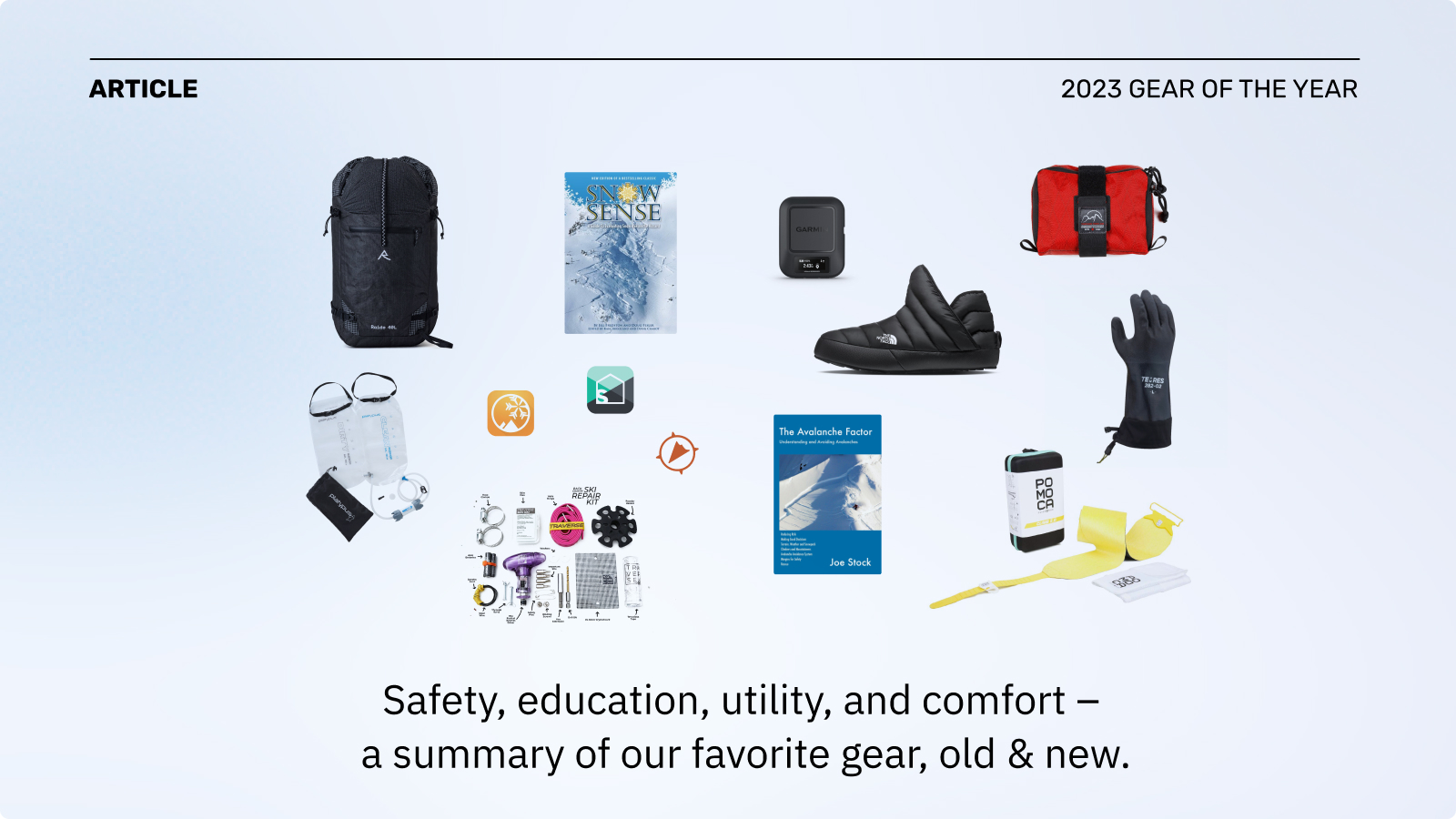
The internet isn’t short on opinions. And, when it comes to gear reviews from major publications – you can’t help but feel a lot of the opinions are backed by sponsors or powered by affiliate programs. Not here, though! Just some regular, good ol’ opinions on items that enhance your experience before & during your hut trip. If anything here piques your interest, buy direct from the manufacturer or pay a visit to your local snow, backcountry, or alpine shop. They’ll appreciate it.
In no particular order – below is a mix of gear that may be familiar to you, along with some newer items worth checking out this year.
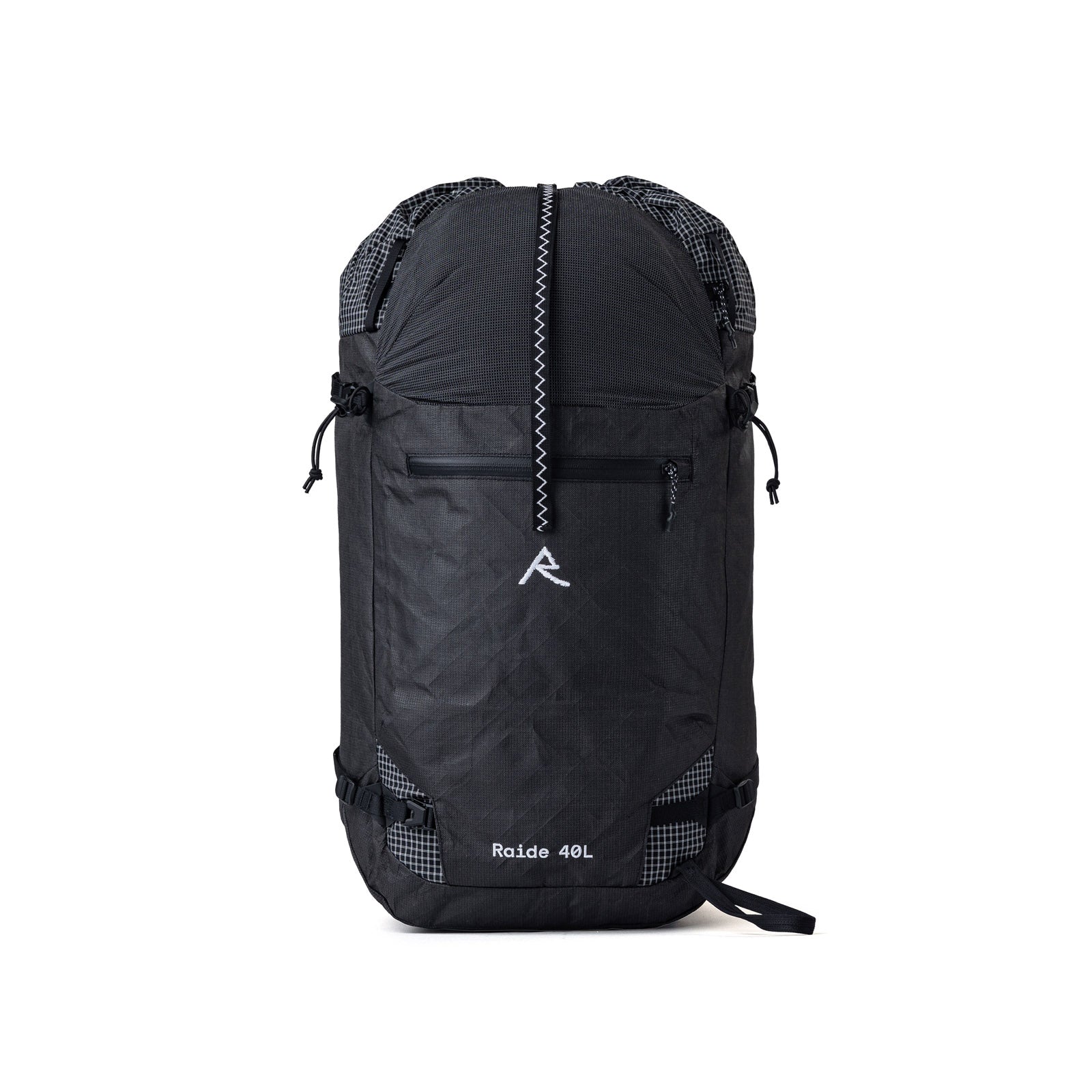
Raide Research has probably invaded your algorithm at this point; but, if you’re not on social media, these packs are only the start of a line of gear catering to efficient human-powered movement in the mountains. Lightweight, feature-first gear coming out of Carbondale, CO.
While we’ve only gotten the pack out on a few tours, Raide’s first attempt at doing what other companies have struggled to do has captured our attention. Namely, being able to complete an entire transition without digging through your pack. And, the possibility of finally answering the seemingly never-resolved question of which pack(s) you bring on your next hut trip. Stupid-simple helmet carry, skin stash, roll-top + cinch-top combo, back-panel access – the list goes on.
Could this be the one? We’ll report back. Feast your eyes at https://raideresearch.com/, and follow along at @raide.research.
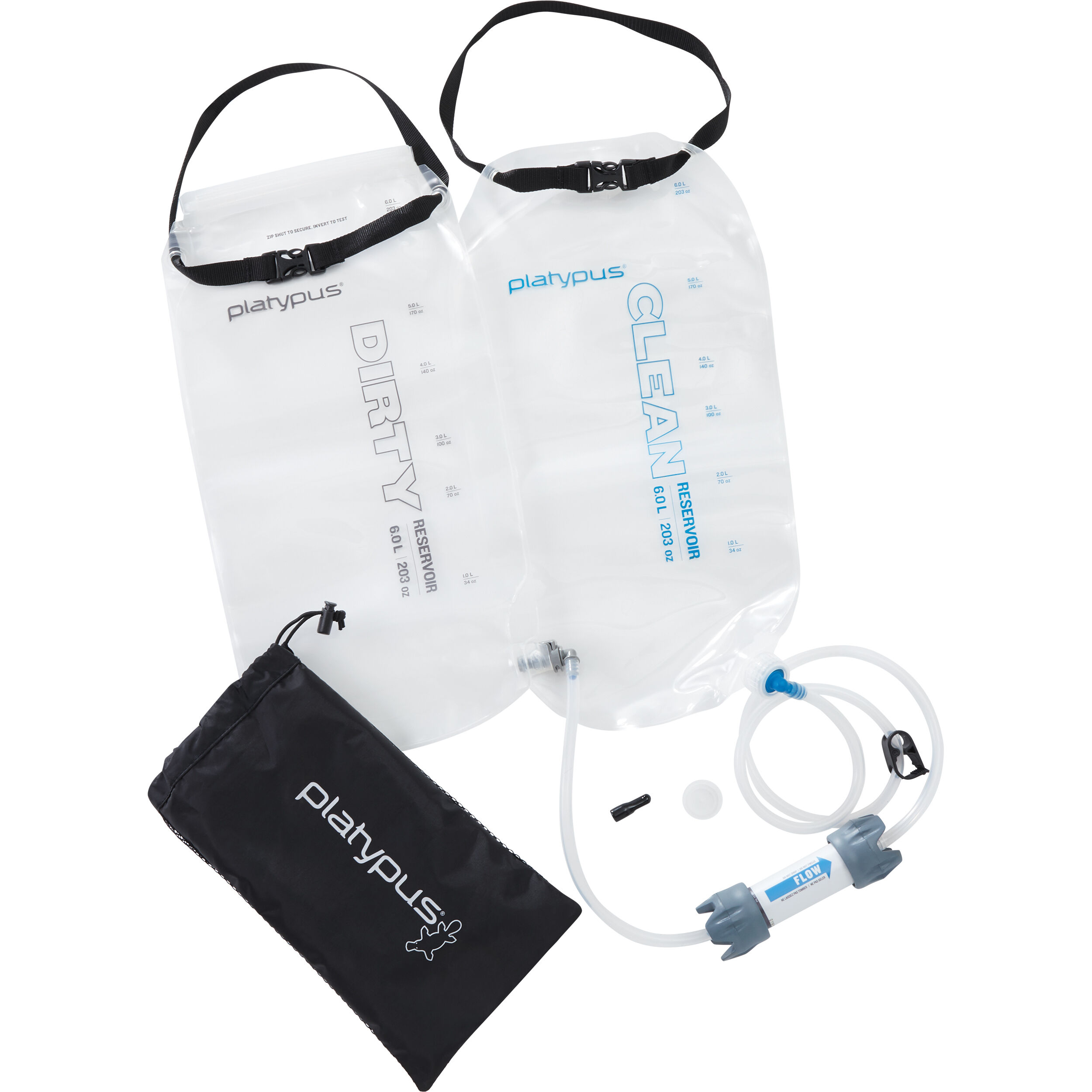
Your older, funky uncle may have been drinking untreated water out of this drainage since the 70s, but let’s face it – stomachs were built different back then. And, there’s simply much more traffic + usage in these familiar places.
Putting aside the “to treat, or not to treat” discussion – let’s assume we’re treating it. If you’ve ever filtered water for 12 people, you know that a pump filter is not the move. Gravity, though? It’s free, it works pretty damn hard all the time, and – with the right planning – you can have a bounty of water for you and the crew at any moment.
Drink responsibly with Platypus. Not sure why you need to follow them on Instagram, but you can find plenty of happy, clear-water-drinking individuals @platypushydration.
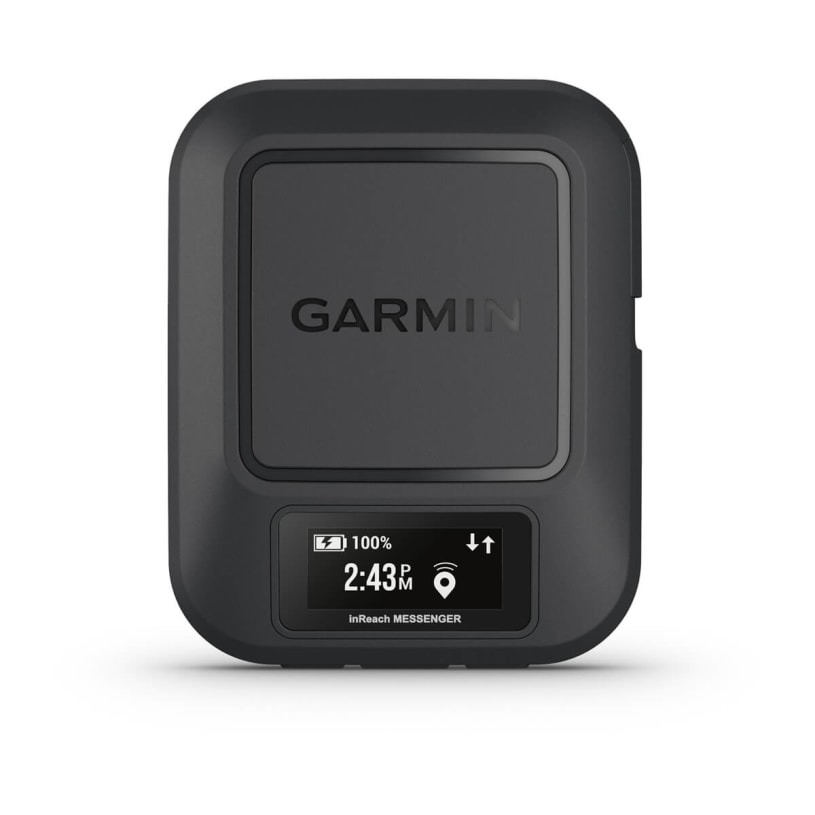
The inReach Messenger is one of many satellite communicators out there, but this one does a very select set of things really well. I don’t need a map or navigating capabilities as a part of my SOS device; what I need is the ability to message someone from afar coupled with a big red ‘help us’ button in the form of SOS.
The device may be pricey (don’t forget, you’ll need to secure one of the various plans through Garmin for the device to function), but we’ve all heard stories where these puppies have alerted critical support when it’s needed most. You can’t really put a price on that. And, with push-button SOS, push-button check-in messages, and the option to enable automated tracking intervals – the added 114 grams justifies itself.
As contact time increases the further you go out in the backcountry, consider reading up on the inReach Messenger here and at least having one amongst your group.
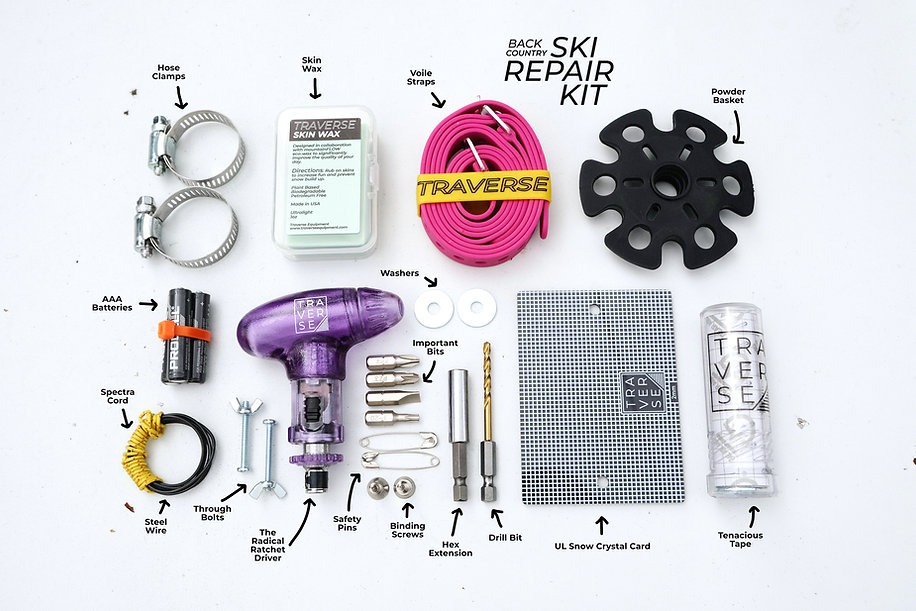
We’re a sucker for small, local brands that understand the needs of a niche group. Traverse Equipment – based out of Bellingham, WA – understands that being unable to repair your gear in the field totally sucks. And, they may have possibly thought of anything that could go wrong…even as far as splinting a broken ski using a drill bit and a snow crystal card. I’m talking hose clamps for your poles, a hex drill bit fitting a ratched-driver ski tool, through bolts, steel wire, etc.
If you can’t get yourself out of a bind with this kit, you might need to look within. When distance grows and trip length increases, having a workhorse repair kit is crucial.
Read more about their Backcountry Ski Repair Kit here, and smash the follow button @traverseequipment.
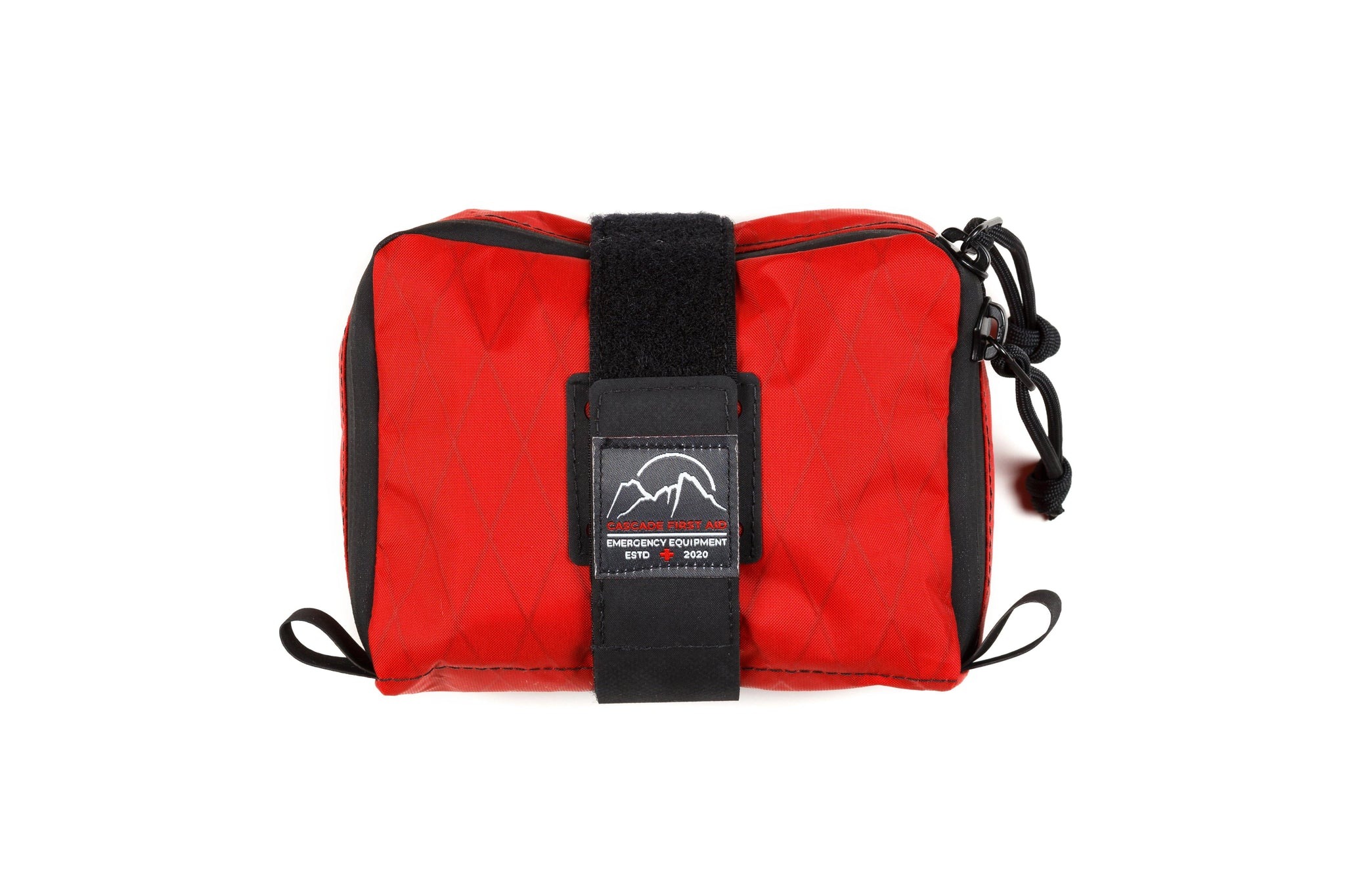
Out-of-the-box first aid kits tend to give you all of the things you don’t want and not enough of the things you use. For backcountry touring, especially, kit needs can be quite specific and arguably more resource-intensive.
Cascade First Aid was founded by an Emergency Physician + business partner duo in Bellingham, WA. As backcountry skiers, mountain bikers, climbers, and backpackers, Cascade First Aid makes sure that the quality contents of these kits go far beyond a standard pre-packaged kit. Gone are the days of finding a bag you like and stuffing it with your own necessities – these kits have the everyday basics covered, and they’re modular enough to be rearranged for whatever activity is ahead of you.
For minor, more every-day needs – check out the Traverse kit here. And, for those with more advanced wilderness first aid training – check out their larger and more capable Liberty Bell kit here. Consider this kit when potential injuries or the duration of extrication may be more complex.
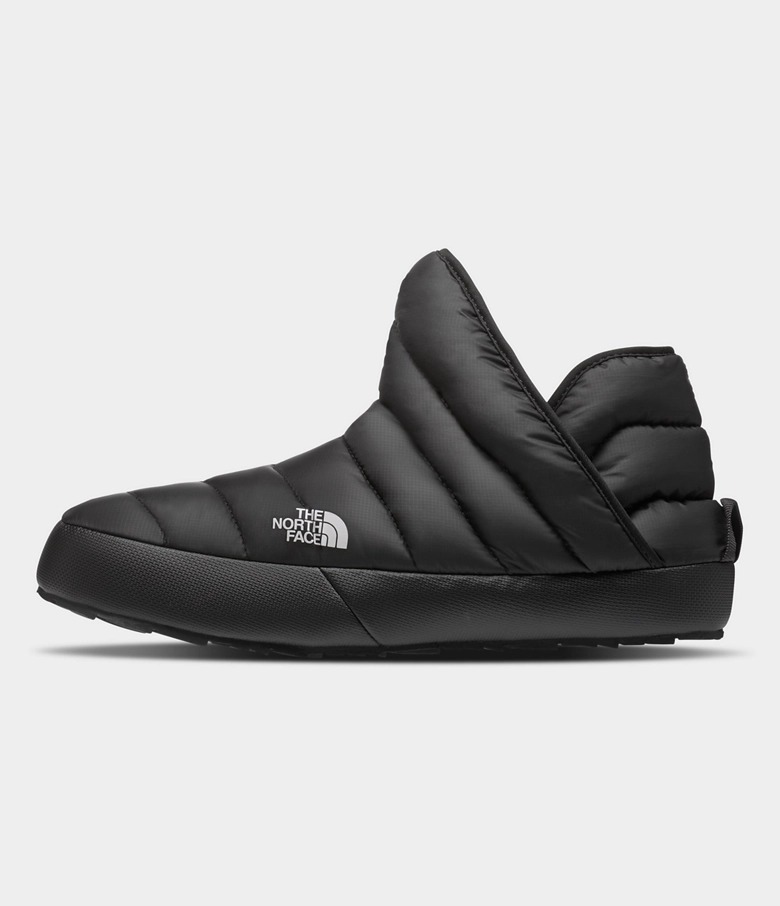
Don’t go around mucking up your boot liners while you’re in & around the hut – aren’t they supposed to be drying out? If you’re not already rocking a pair of house slippers in the frontcountry, believe us when we say that they’re even better in the backcountry.
These things may not be new, but they have the best balance of warmth, packability, and durability out there. Cold night walk to the outhouse? Grabbing some more buckets of snow for your fellow water farmers? Taking a look at the stars? These booties have you covered. Available as a bootie or as a mule (low-top), both with squashable heels if that’s your kind of thing.
Find them locally, or online at North Face here.
Oh – and, if they’re sold out in your size or color…check both Men’s & Women’s inventory. They’re hardly different, just be sure to check the fit guide and size accordingly if you do so.
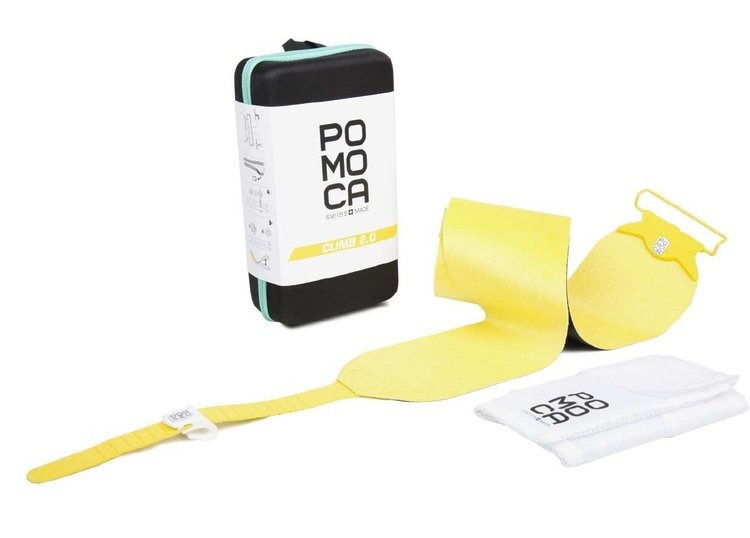
Everyone and their grandma has a horror story about skins. “Brand X” can be both the best and the worst skins on the market – how could it be!?
There’s something to be said about the people that take care of their things and people that don’t, but we digress. Pomoca has been one brand that doggy paddles above the surface of critique as one of the more dependable skin brands out there. So, if you like gliding and skins that stick only when you want them to – look no further. And if you splitboard, they’ve got options for you, too.
Get them locally, and read more about Pomoca skins here.
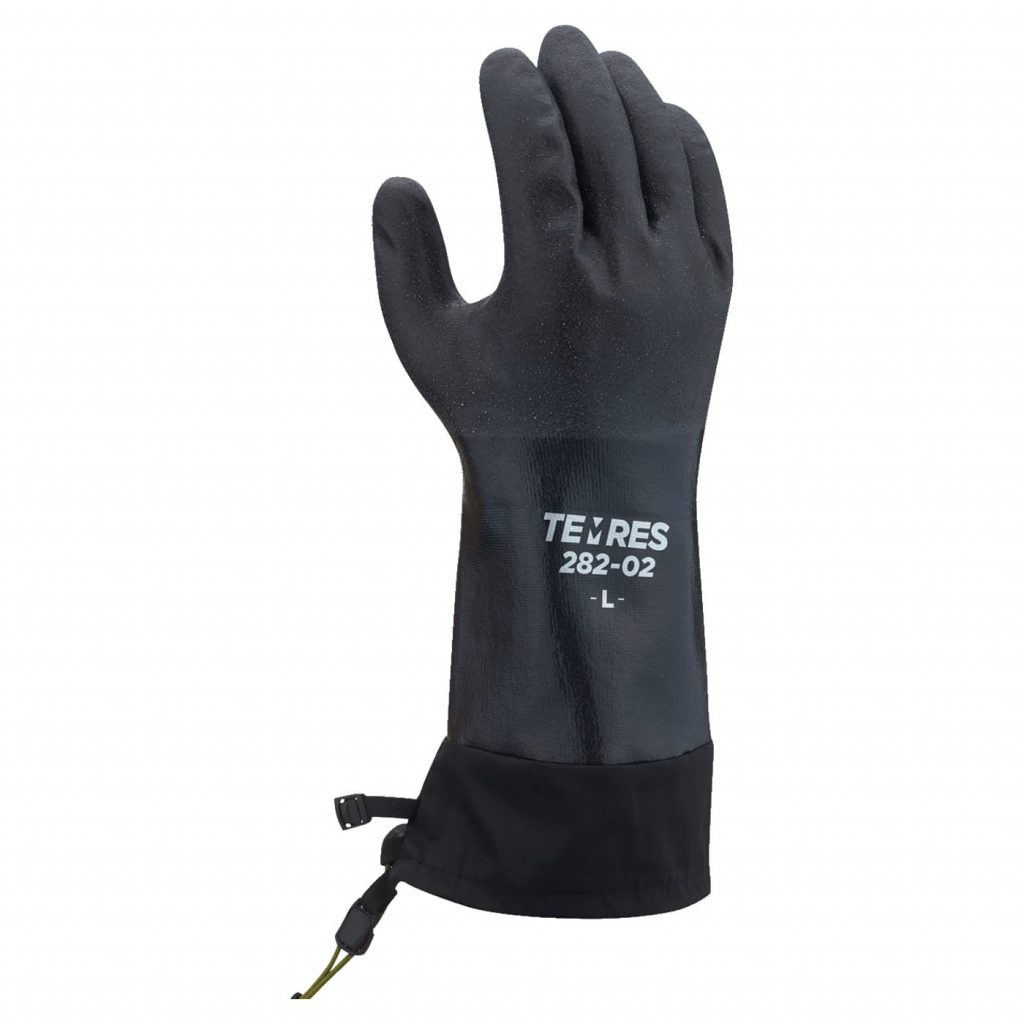
Fashion over function? Well – the team at Showa Group surely didn’t catch that memo. Careful wearing these around your less utility-forward friends, as you’ll likely earn the nickname ‘Mad Scientist’ when you wear these with a pair of glacier glasses.
In any case – if you’re spending any time with your hands in the snow or in a more maritime snowpack, these insulated fishing gloves are it. They’ve got a textured grip, an extended cuff, and excellent dexterity. Spending $20 never felt so good.
Read more about them here, and find ‘em at your local marine store.
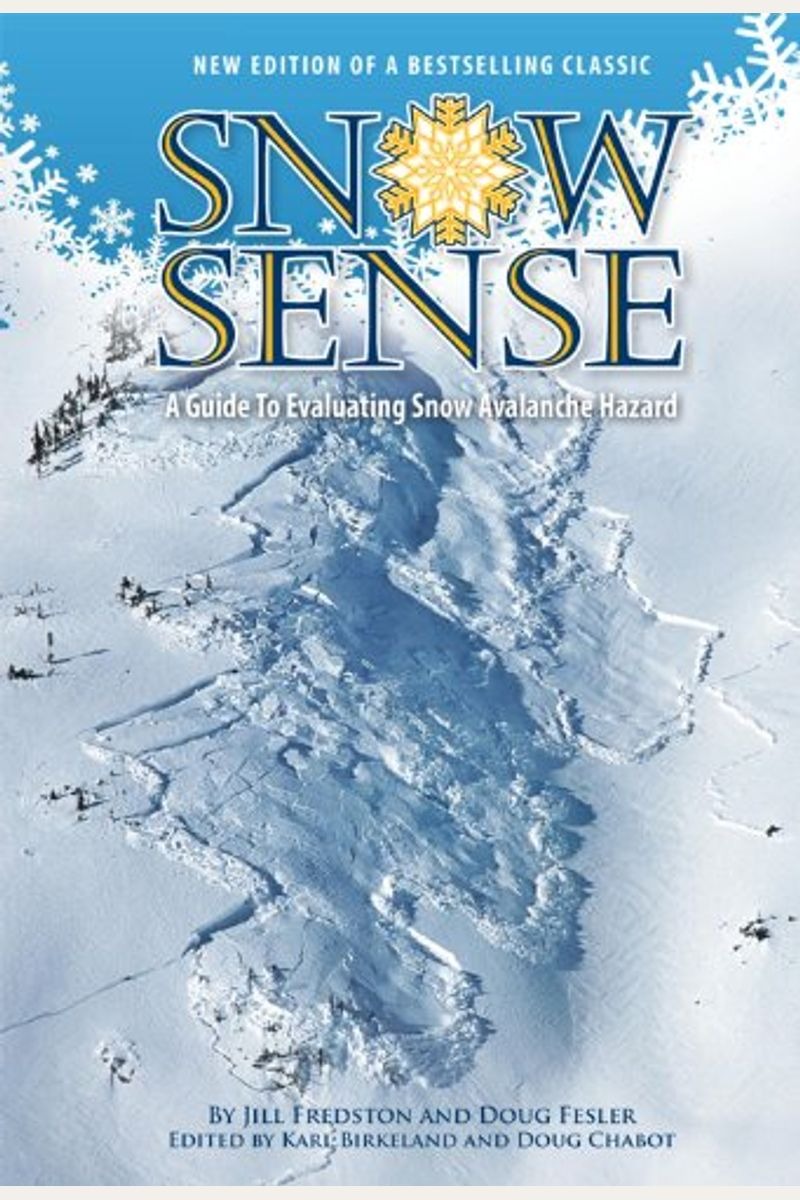
Avalanche education is a crucial component to getting in the backcountry, but much of the material out there trends toward the academic end of the spectrum, resulting in a dense, but thorough read. On the opposite end of the spectrum is “Snow Sense” – a dependable, easy-to-pick-up/put-down dose of avalanche education focusing on the reminders you need at the start of each season.
It can feel rudimentary at times, but it’s easy to travel with and a much-needed recap to brush the cobwebs off every time ski touring comes back around. Easily crushed on an airplane, a long car ride, or a few trips to the throne.
While it may be tough to find in print, you can surely find it as a digital download online.
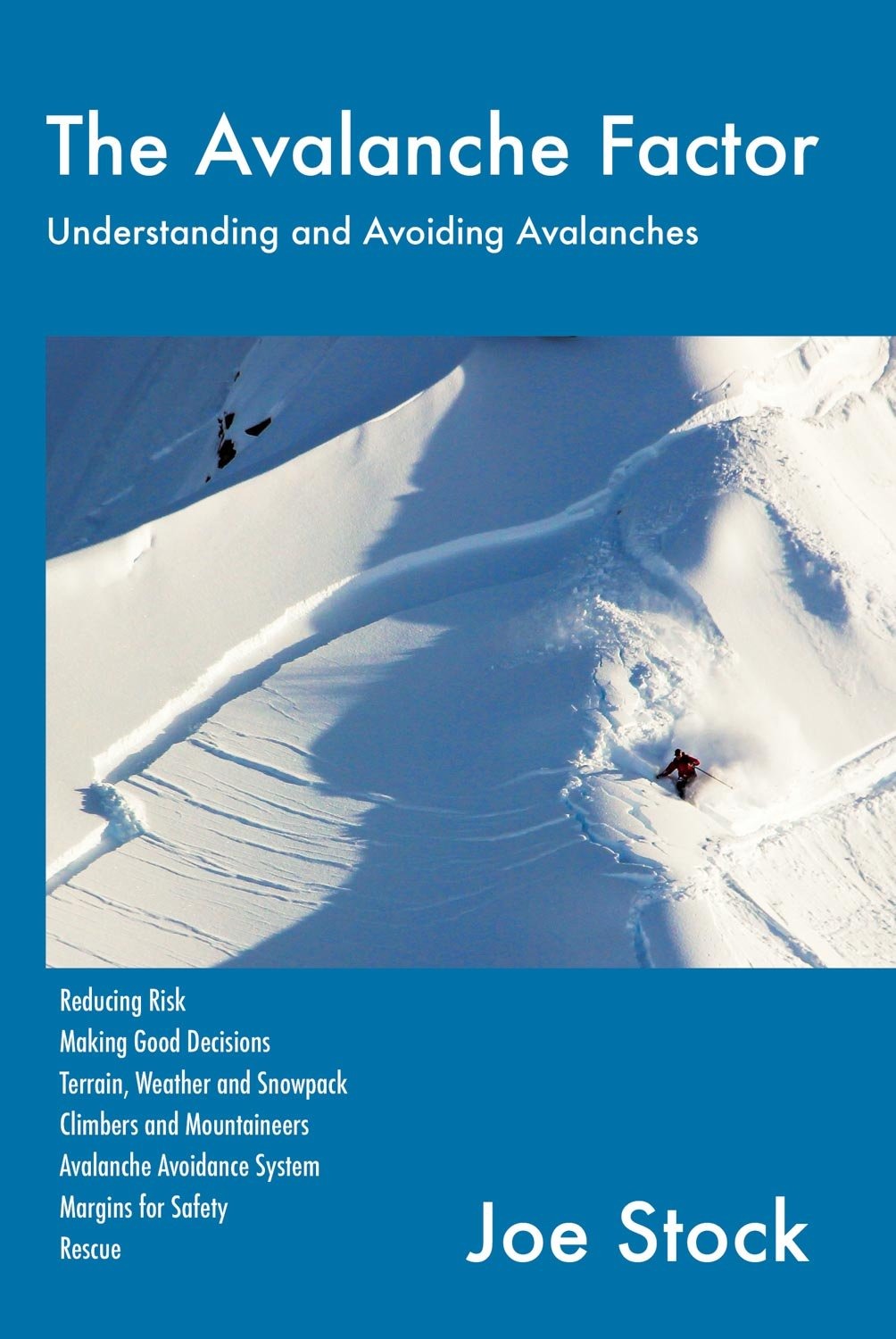
Published in October 2023, “The Avalanche Factor” is written by Alaska-based IFMGA mountain guide Joe Stock and geared toward recreational skiers / climbers. Joe’s been climbing and skiing around the world for 35+ years, teaching avalanche courses for the past 20 years, and working to improve the very avalanche curricula we partake in for the past 10 years.
This book is a well-structured read covering topics like field observations, margins of safety, the avalanche avoidance system, and rescue among others. Supporting imagery and diagrams are included throughout – nearly half the book (!) – to help demonstrate these concepts and the sheer magnitude of the sleeping dragon we hope to avoid.
Buy “The Avalanche Factor” direct from Joe at his website here.
Digital tools & resources are becoming a larger part of the gear closet. When it comes to planning and managing hut trips, we find these apps particularly useful. We’re talking editorialized, worldwide weather forecasts, robust mapping tools, and a way to make sure you get paid back for the group dinner at the end of your trip.
Download OpenSnow, CalTopo, and Splitwise from wherever you do your downloading.
Hut Tripper aims to be the go-to hub for backcountry hut exploration, crowd-sourced beta, and trip planning resources geared toward winter backcountry travelers. We're backcountry enthusiasts, ourselves, combining our love for alpine skiing, the wilderness, and adventure.
We exist to empower new & existing backcountry travelers to explore the mountains in a responsible and informed way, consolidating winter backcountry accommodations as far east as the Rockies and detailing each with an ever-evolving list of hut details and beta.
